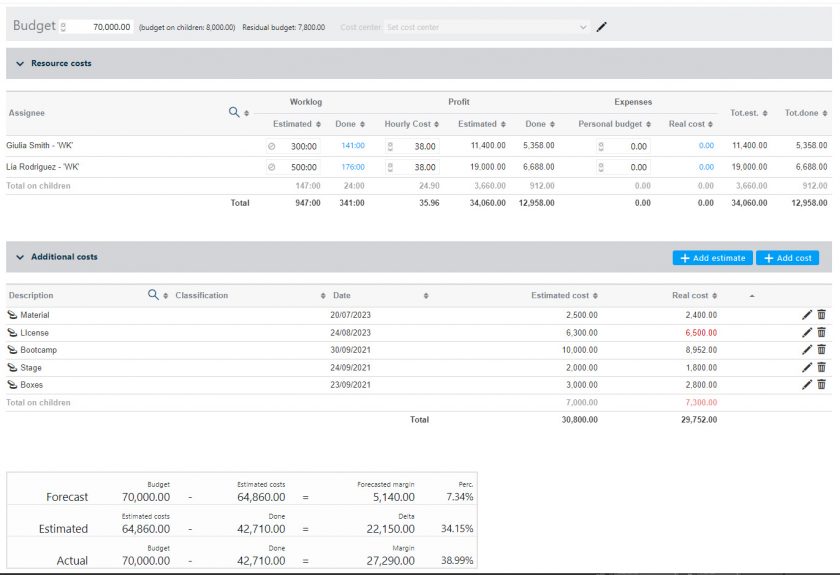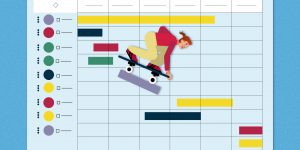Reducing project costs and budget management is an ongoing process for which a project manager is always looking for innovative ways.
An improper allocation of resources can adversely affect the project’s profitability, cause the project to go over budget compared to the project baseline, and, in some cases, lead to project failure.
CONTENT
Sometimes, the project’s scope may suddenly change, which can disrupt the project plan, and you may need to add more resources that were not initially considered.
The project manager needs to ensure that the budget is reviewed regularly and, more importantly, in such a situation.
In addition, the project’s costs can be monitored by reviewing its progress during each stage and making sure there are no discrepancies.
But beyond that, here are some tips for reducing the cost of a project.
Allocate competent resources during the project start-up phase
Identifying and assigning the right resources during the start-up phase helps deliver the project on time and budget.
It also helps avoid allocating insufficient or overqualified – and therefore expensive – resources to certain project activities.
On the other hand, assigning underqualified resources will cause delays in delivery and compromise the quality of results.
Therefore, the project manager must ensure that critical resources are acquired and allocated appropriately before the project begins.
Look for cheaper resources
The resources used by a project can often be expensive and can reduce profit margins.
There are many instances of companies increasing the cost of the resources they offer when competing and many projects wasting resources, which means you are paying higher costs than you should be.
However, there are many ways to reduce the amount and cost of resources used, such as comparing pricing from multiple vendors and implementing streamlined processes.
Or is it possible to find existing hardware to use instead of buying new equipment?
Reduce project duration
Another way you can reduce the expense of a project is to shorten its duration.
The longer a project is, the more resources will need to be used, including materials, administrative costs, energy, and employees, all of which will need to be paid.
Project length is one of the main reasons why companies fail to meet their original budgets.
To shorten the critical path, you might consider performing multiple tasks simultaneously, turning full dependencies into partial dependencies that can run parallel.
Reduce project scope

If the project’s cost is a concern, one solution might also be to consider reducing the scope of the project.
Although the scope is determined during the initial planning stages, this can prove costly and time-consuming if it is too broad.
You can reduce the scope by reducing the number of tasks that will be met simultaneously, limiting the project to only the most essential processes and requirements.
Note, however, that reducing the scope of the project may require the approval of important stakeholders.
Review workload estimates
Do resources need 8 hours a day to perform a task, or can some of them work fewer hours a day on that given task?
Not only should duration estimates be evaluated to shorten the program, but also workload estimates.
In case this could be a solution, this may require renegotiation with some team members.

Manage your budget correctly
In addition to the aforementioned tips, it is also essential to implement a sustainable budget into the project plan and for the project manager to be able to monitor progress and adjust it to needs when necessary.
Most budgets are relatively rigid because of budget approval early in the planning phase, which often includes funding from project sponsors.
Therefore, the project manager must be able to work within these boundaries throughout the process.
To do this, you need to map your expenses before you start and use budget tracking tools to stick to them throughout the project lifecycle.
Use agile management techniques
Agile management can be the perfect way to avoid wasting resources, leading to lower project costs.
Agile management uses short development cycles to advance and improve a project continuously.
This management technique can help improve the efficiency of a project which, as a result, can lead to saving money.
Seek process improvements
Another solution might be to see if there are ways in which you can achieve your goals differently.
For example, is it possible to do work remotely instead of requiring office visits?
Is it possible to gather requirements in one day, through a joint design session, rather than in three weeks using traditional methods?
Is it possible to outsource some of the work at a lower cost than doing it in-house?
These and other questions can lead to money-saving process changes.
Use project management software
Although project management software often has a high upfront cost, using it can help reduce the cost of a project.
That’s because dedicated software can help reduce the cost of manual processes and the extra time to be invested and allow employees to be more productive through automated processes, resource optimization, the ability to meet deadlines, and the reduction of administrative errors.
In this regard, the advice is to try a free project management software such as Twproject.
By streamlining internal project management via Twproject, we are able to implement a very strong and effective cost control on the resources directly involved in account-based projects

In conclusion, the main goal of cost management for a project is to eliminate unnecessary costs without compromising the quality of the final results.
However, this is an ongoing process within project management and requires constant monitoring to try to maintain the project budget.
Also, determining discrepancies helps you take timely action and avoid going over budget.
Often, project managers reserve 10 to 20 percent of the budget for unforeseen circumstances and create the project plan with the remaining budget so that there are no last-minute hiccups.
Watch how simply Twproject helps you not to make these mistakes again:
Human error is greatly reduced when using software such as Twproject, which allows you to keep track of every item of expenditure, warns you in the event of shortages or unforeseen events and always provides you with an up-to-date comparison table between estimated, forecast and actual.




